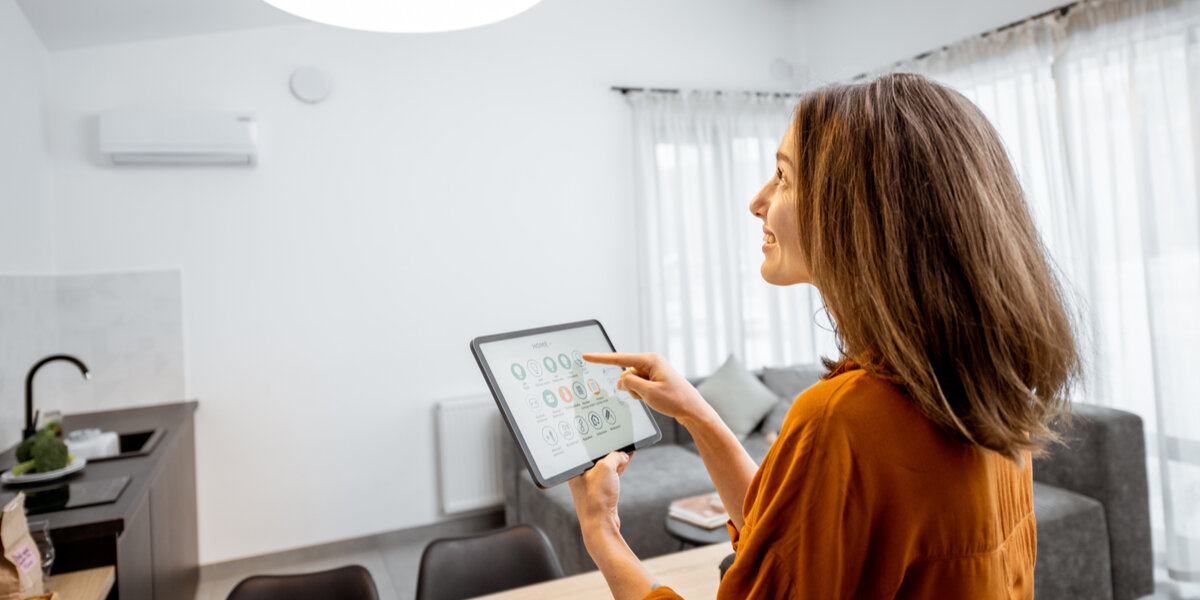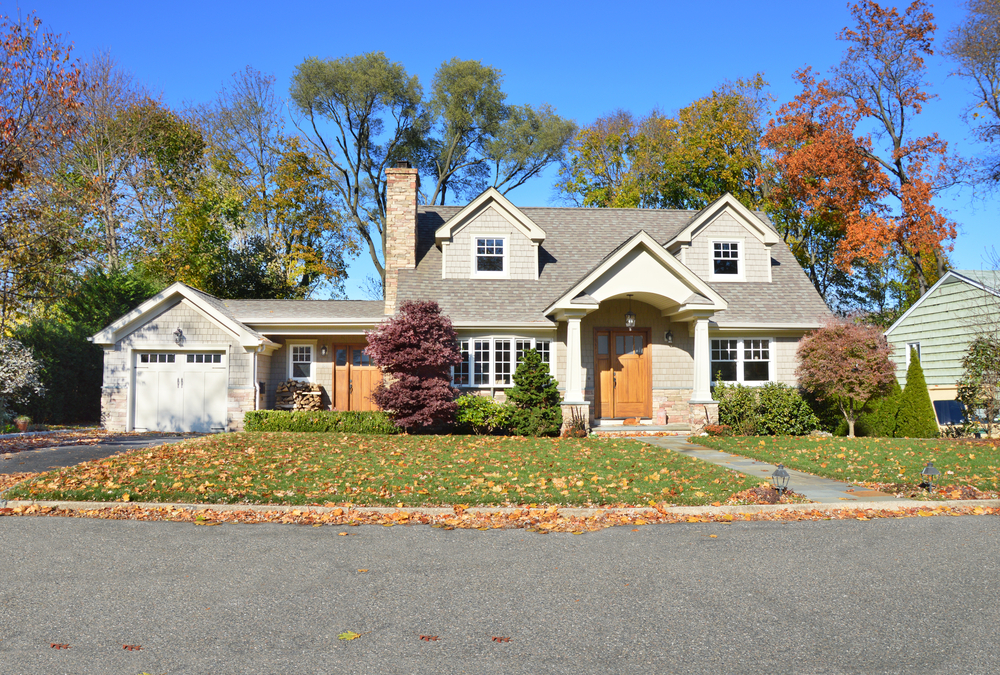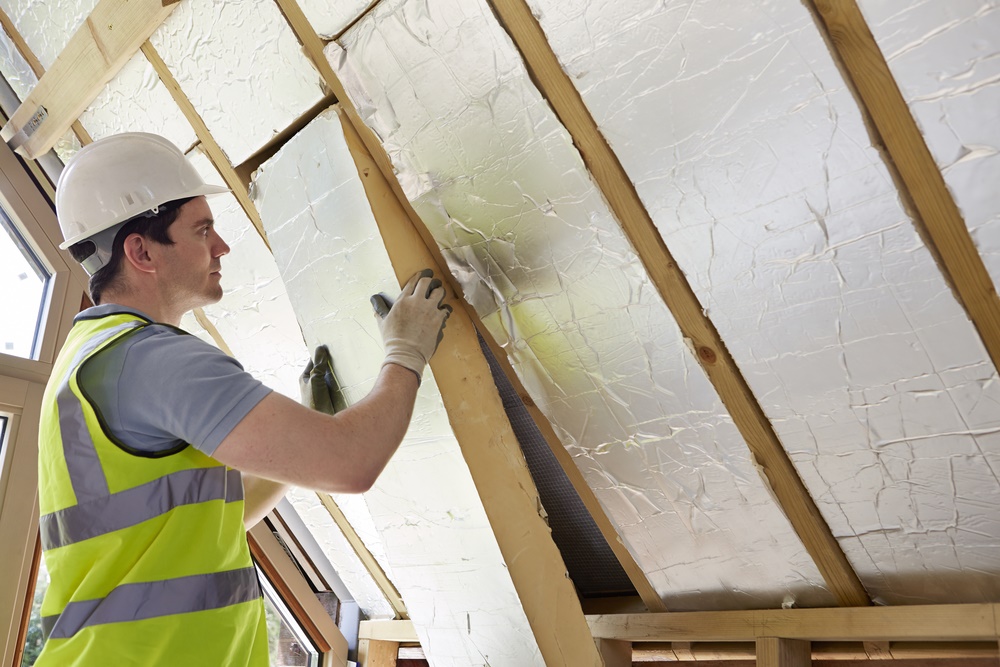Can Your Smart Device Save You Energy and Money? Here’s What to Look For.
Let's Save Energy
Alliance to Save Energy's Blog
Can Your Smart Device Save You Energy and Money? Here’s What to Look For.

More than half of all homes in North America could be “smart” by 2024. But as more households install smart technology, how can you get the most out of your investment? There are an increasing number of smart devices on the market that could help you better manage your home energy use, and therefore tamp down your monthly energy bills. Let’s talk about how smart devices work, what energy-saving features to look for, and what you should consider as a renter versus a homeowner before making your investment.
Which smart devices could help me save energy?
“Smart” devices may be connected to the Internet, connected to the grid, mobile app-enabled, automated … the list goes on! If applied appropriately, any of those features can help save energy, and the device can often pay for itself over time through cost savings.
Here are some examples of smart devices that can save energy:
- Smart power strips. Consider vampire loads: the energy drained from devices not in use, like a fully charged laptop left plugged in, can add up to $200 per year on a household’s energy bills. Tackling vampire loads can be as simple as plugging all your work desk equipment into a smart power strip that will switch off the power when the main device, like your computer, goes into standby mode.
- Smart thermostats. With a smart thermostat or even a simpler programmable thermostat, you can customize your thermostat’s heating and cooling schedule (here’s a how-to) to save about $180 per year on energy costs. Smart thermostats often have the added feature of occupancy sensors: they can learn to optimize the temperature when you are present, and conserve energy when you are absent. Keep an eye out for rebates: More than half of states have at least one utility that offers rebates for smart thermostats, and these programs are growing. For those without central cooling/heating, a timer feature on standalone units (like window AC) can help you save.
- Smart light fixtures. With occupancy sensors that turn lights off when you’re not around, or even geofencing technology synched with your smartphone to detect when your phone is outside the perimeter, smart lighting keeps your home bright when you need it and saves energy when you don’t.
- Home Energy Monitoring/Management Systems (HEMS). These sophisticated systems show users what appliances are wasting energy at home. Regardless of whether a home’s appliances have connectivity features, HEMS only need to be installed into the electrical panel to detect which devices are consuming energy, how much, and when. Some HEMS also compare a home’s energy use to the neighborhood’s average. This information is provided to you on an app, sometimes along with suggestions for appliance settings to change to save energy or even remote control features. You can make the most of the controls by finding a HEMS that is compatible with any connected appliances you already own.
- Grid-enabled equipment/devices. Devices able to connect to the electrical grid come in many forms, including smart thermostats, Smart Home Energy Management Systems, grid-enabled water heaters, or grid-enabled air conditioners. When registered in a utility demand response program, households can often take advantage of rebates or lower energy prices by allowing the utility to remotely adjust device settings when demand on the grid is high. For instance, a utility can signal a smart thermostat to increase a few degrees on a hot summer afternoon, or a grid-enabled hot water heater to prepare hot water before a peak period.
But what if the upfront cost of any of these devices is out of budget? As you weigh options, check out ENERGY STAR’s rebate finder to ease upfront costs and help realize savings sooner. Also, this blog suggests foundational energy efficiency measures you may be able to take to save on energy bills before diving into the world of smart devices.
Which features should I look for?
With an idea of which energy-saving smart devices are available, here’s a checklist of questions to ask before making a purchase.
- Does the smart device schedule operations or automatically turn off appliances when you don’t need them?
- Does the smart device alert you to high energy use?
- Does your smart device alert you to changes in energy costs?
- Does your utility offer rebates or programs for grid-enabled devices?
“There is a ton of potential out there to cut energy waste. We need to be conscious of our carbon footprint.” - Gerard Font Raventos of Schneider Electric
Information alone is powerful. Schneider Electric has found that just making customers aware of the details of their consumption by using a HEMS empowers them to reduce their energy bills by 8% on average. Legrand, another manufacturer of HEMS devices, also finds that monitoring consumption through their products can lead customers to save 8-12% on their energy bills.
Considerations for renters
Bringing energy-saving smart devices into your home will look different for a tenant versus a homeowner. A portable device – like an advanced power strip – can be especially appealing to tenants, who can take this money-saving tech with them at the end of their lease. But with a little homework and a cooperative landlord, tenants can benefit from unportable devices too, such as smart thermostats or home energy management systems. Tenants can find out if their local utility offers a rebate for smart devices (see ENERGY STAR’s rebate finder), and then make a pitch to their landlord to install it not only to lower the tenant’s energy bill and save emissions locally, but also add to the landlord’s property value.
Smart devices have enormous potential to help households save on energy expenses while also reducing emissions and strengthening grid reliability, and we hope this guide helped you learn what to look for to get the most out of a purchase. To learn more, make sure to check out the work of the Alliance’s Active Efficiency Collaborative, which explores how we can better optimize energy use for everyone by taking advantage of new opportunities in the energy sphere including smart devices.
STAY EMPOWERED
Help the Alliance advocate for policies to use energy more efficiently – supporting job creation, reduced emissions, and lower costs. Contact your member of Congress.
Energy efficiency is smart, nonpartisan, and practical. So are we. Our strength comes from an unparalleled group of Alliance Associates working collaboratively under the Alliance umbrella to pave the way for energy efficiency gains.
The power of efficiency is in your hands. Supporting the Alliance means supporting a vision for using energy more productively to achieve economic growth, a cleaner environment, and greater energy security, affordability, and reliability.



